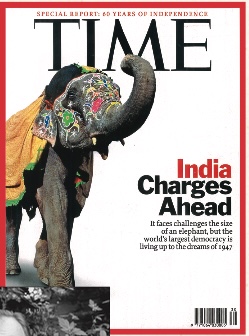BY WILLIAM DALRYMPLE
The idea that India is a poor country is a relatively recent one. Historically, South Asia was always famous as the richest region of the globe. Ever since Alexander the Great first penetrated the Hindu Kush, Europeans fantasized about the wealth of these lands where the Greek geographers said that gold was dug by up by gigantic ants and guarded by griffins, and where precious jewels were said to lie scattered on the ground like dust.
At their heights during the 17th century, the subcontinent’s fabled Mughal emperors were rivaled only by their Ming counterparts in China. For their contemporaries in distant Europe, they were potent symbols of power and wealth. In Milton’s Paradise Lost, for example, the great Mughal cities of Agra and Lahore are revealed to Adam after the Fall as future wonders of God’s creation. This was hardly an overstatement. By the 17th century, Lahore had grown even larger and richer than Constantinople and, with its two million inhabitants, dwarfed both London and Paris.
What changed was the advent of European colonialism. Following Vasco da Gama’s discovery of the sea route to the East in 1498, European colonial traders–first the Portuguese, then the Dutch and finally the British–slowly wrecked the old trading network and imposed with their cannons and caravels a Western imperial system of command economics. It was only at the very end of the 18th century, after the East India Company began to cash in on the Mughal Empire’s riches, that Europe had for the first time in history a favorable balance of trade with Asia. The era of Indian economic decline had begun, and it was precipitous. In 1600, when the East India Company was founded, Britain was generating 1.8% of the world’s GDP, while India was producing 22.5%. By 1870, at the peak of the Raj, Britain was generating 9.1%, while India had been reduced for the first time to the epitome of a Third World nation, a symbol across the globe of famine, poverty and deprivation.
In hindsight, what is happening today with the rise of India and China is not some miraculous novelty–as it is usually depicted in the Western press–so much as a return to the traditional pattern of global trade in the medieval and ancient world, where gold drained from West to East in payment for silks and spices and all manner of luxuries undreamed of in the relatively primitive capitals of Europe.
It is worth remembering this as India aspires to superpower status. Economic futurologists all agree that China and India during the 21st century will come to dominate the global economy. Various intelligence agencies estimate that China will overtake the U.S. between 2030 and 2040 and India will overtake the U.S. by roughly 2050, as measured in dollar terms. Measured by purchasing-power parity, India is already on the verge of overtaking Japan to become the third largest economy in the world.
Looking back at the role Europeans have played in South Asia until their departure in August 1947, there is certainly much that the West can be said to have contributed to Indian life: the Portuguese brought the chili pepper, while the British brought that other essential staple, tea–as well as the arguably more important innovations including democracy and the rule of law, railways, cricket and the English language. All contributed to India’s economic resurrection. But the British should keep their nostalgia and self-satisfaction surrounding the colonial period within strict limits. For all the irrigation projects, the great engineering achievements and the famous imperviousness to bribes of the officers of the Indian Civil Service, the Raj nevertheless presided over the destruction of India’s political, cultural and artistic self-confidence as well as the impoverishment of the Indian economy.
Today, things are slowly returning to historical norms. Last year the richest man in the U.K. was, for the first time, an ethnic Indian, Lakshmi Mittal, and Britain’s largest steel manufacturer, Corus, has been bought by an Indian company, Tata. Extraordinary as it is, the rise of India and China is nothing more than a return to the ancient equilibrium of world trade, with Europeans no longer appearing as gun-toting, gunboat-riding colonial masters but instead reverting to their traditional role: that of eager consumers of the much celebrated manufactures, luxuries and services of the East.
William Dalrymple’s latest book, The Last Mughal: The Fall of a Dynasty, Delhi 1857, has just been awarded the Duff Cooper Prize for History and Biography. This article is reprinted from Time magazine, August 13, 2007 issue, Asia edition.
